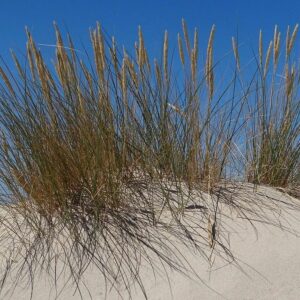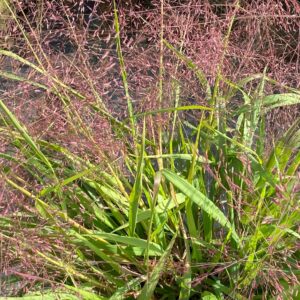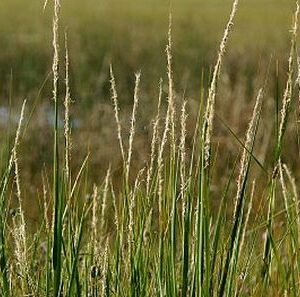- Ph: (631) 801-2855
- All Visits by Appointment Only
- info@linatives.com
- My Account
This is a 2-4 ft., clump-forming, perennial grass bearing large, drooping, oat-like flower spikelets from slender, arching branches. The blue-green, bamboo-like leaves often turn a bright yellow-gold, especially in sunnier sites, in fall.
Very popular as a low-maintenance shade grass, it is notable for its large, graceful seed heads. Sending up blue-green basal leaves in earliest spring, it can be 2 feet tall and a vivid green by May, with translucent green seed heads swaying in the breeze. By mid-summer, the seeds will have turned an attractive ivory and will turn brown in a few months before dropping off. It passes through most of winter a soft brown, but becomes tattered and gray by February, a good time to cut it back to the basal rosette. It reseeds easily and can expand aggressively within a couple of years, making a solid mat in moist loams. It has been used to prevent soil erosion along streams. The seed stalks are attractive in flower arrangements.
$14.99
Please note: Most pictures represent mature plants. Unless otherwise specified, all of our plants are sold in 4″ pots to make shipping possible and will mature in time.
Learn more about how the process works and how our plants are delivered.



| Size | 1 Gallon |
|---|---|
| Moisture | |
| Native | |
| Special Attributes | |
| Sunlight | |
| Wetland Indicator |
This is a 2-4 ft., clump-forming, perennial grass bearing large, drooping, oat-like flower spikelets from slender, arching branches. The blue-green, bamboo-like leaves often turn a bright yellow-gold, especially in sunnier sites, in fall.
Very popular as a low-maintenance shade grass, it is notable for its large, graceful seed heads. Sending up blue-green basal leaves in earliest spring, it can be 2 feet tall and a vivid green by May, with translucent green seed heads swaying in the breeze. By mid-summer, the seeds will have turned an attractive ivory and will turn brown in a few months before dropping off. It passes through most of winter a soft brown, but becomes tattered and gray by February, a good time to cut it back to the basal rosette. It reseeds easily and can expand aggressively within a couple of years, making a solid mat in moist loams. It has been used to prevent soil erosion along streams. The seed stalks are attractive in flower arrangements.






